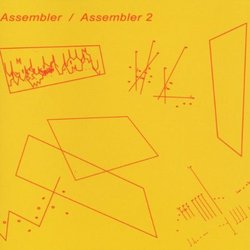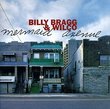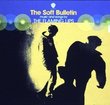| All Artists: Nobukazu Takemura Title: Assembler: Assembler 2 Members Wishing: 1 Total Copies: 0 Label: Thrill Jockey Release Date: 4/8/2003 Genres: Dance & Electronic, Alternative Rock, Special Interest, Pop, Rock, Classical Styles: Indie & Lo-Fi, Experimental Music, Dance Pop, Historical Periods, Modern, 20th, & 21st Century Number of Discs: 1 SwapaCD Credits: 1 UPC: 790377012323 |
Search - Nobukazu Takemura :: Assembler: Assembler 2
 | Nobukazu Takemura Assembler: Assembler 2 Genres: Dance & Electronic, Alternative Rock, Special Interest, Pop, Rock, Classical
|
Larger Image |
CD DetailsSimilarly Requested CDs
|
CD ReviewsA Bento Box of Glitches Rob Hardin | New York, NY | 06/29/2003 (4 out of 5 stars) ""Five years ago, I was attracted to the idea of music that could not be predicted, and became interested in the use of random numbers for music production. I used to create virtual instruments in the computer which were equipped with numerous devices that generated random numbers. But as result, I lost interest in this concept of "randomness." I realized that even if I purposely tried to stage an unpredictable situation, there would be no way to surprise myself with mathematical equations or devices that I designed myself." -- Nobukazu TakemuraIf you're familiar with the paintings of Gerhard Richter, then you know what happens when a trained artist shuttles between the representational and the non-representational: the aim of the work is total integration. Pollack, Seurat and Chuck Close get subjected to the same arsenal of techniques until they function purely as stylistic and formal elements: abstract expressionism, pointillism and photorealism become mere textures, shades of contrast on a seamless aesthetic spectrum. Such is the language of synthesis.Something similar occurs when musician Nobukazu Takemura creates a pastiche of glitch styles that have evolved over the past eight years. Oval, Geez 'n' Gosh, Microstoria, Nine Types of Ambiguity and Ekkehard Ehlers, all make their brief appearance in the work of Takemura, a composer who, like Ehlers, has the training and taste to organize noise coherently. This is the most difficult album Takemura has recorded so far. I can't recommend it to people who are looking for the tuneful simplicity of Child's Play, Songbook or Takemura's music for the Miyake fashion show. If you're looking for the new Satie, seek out those albums. If, on the other hand, you happen to like raucous and erratic musik concrete, pick up Assembler. Each piece is a foray into a different kind of glitch; if you can discern the difference, you'll be surprised at the variety of styles. If you *don't* like clicks and cuts, Assembler will probably sound relentlessly harsh and monochromatic. If that's the case, and you're looking for music that is less difficult but still challenging, try Assembler's predecessor, Scope. Unlike Assembler, obvious post effects have been applied to the edited noise on Scope: pitched tracks like "Icefall" and "Tiddler" are drowning in digital reverb. And while Scope doesn't feature the epic cantabile fingerpainting of "Child's Play," it is evocative of childhood all the same. (And by the way -- what is IDM's smarmy preoccupation with childhood about, with its embrace of apparent normalcy? There's a bit of Henry Darger in Boards of Canada's idealization of wee tots. Not so with Takemura, whose music is about the ambiguities of innocence rather than the faux ironic sentimental glorification of children.)"
|

 Track Listings (7) - Disc #1
Track Listings (7) - Disc #1

